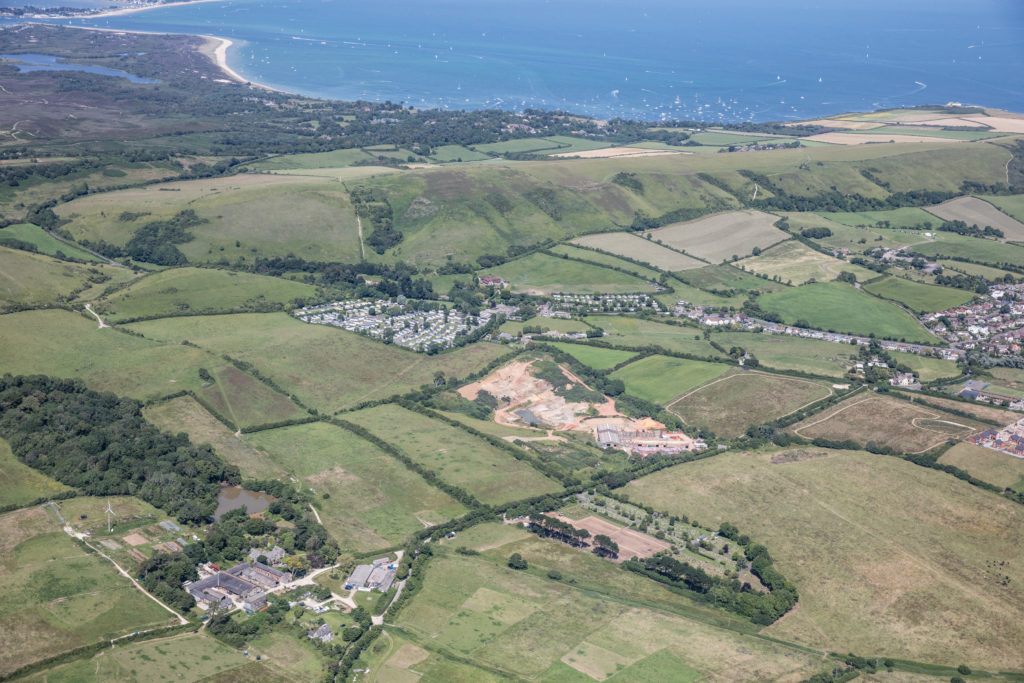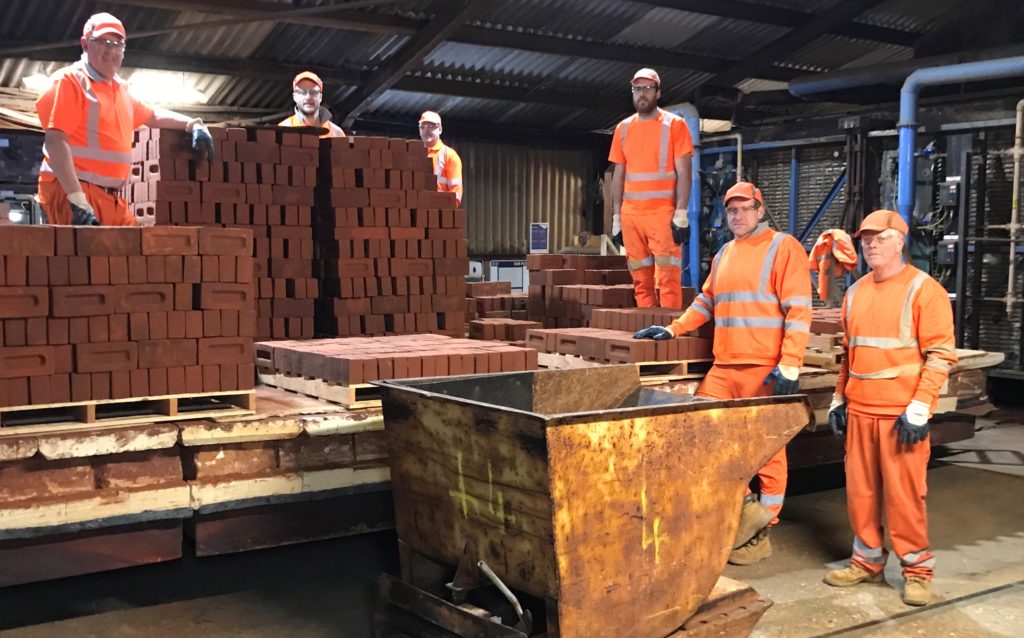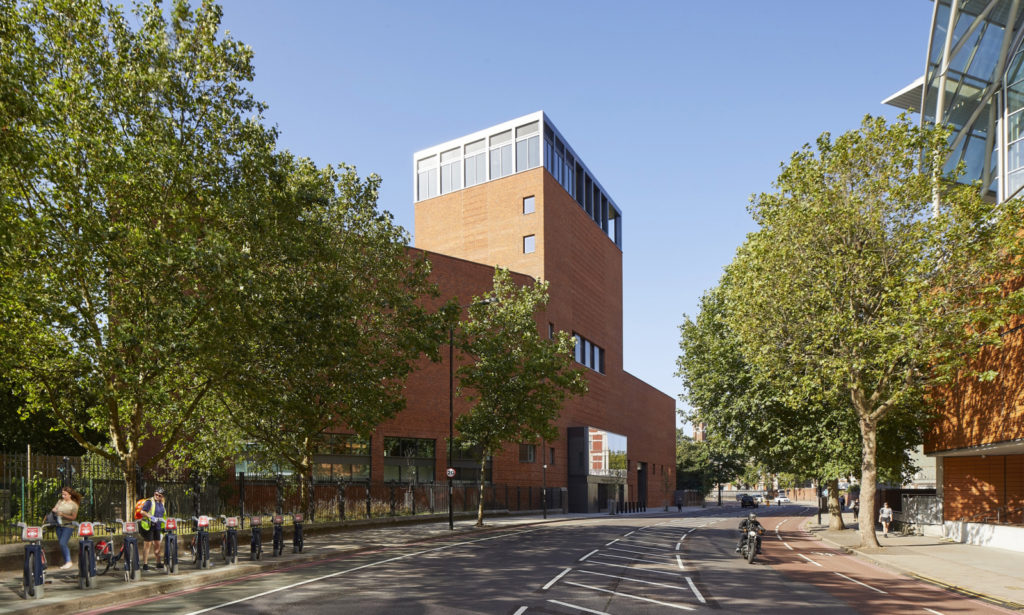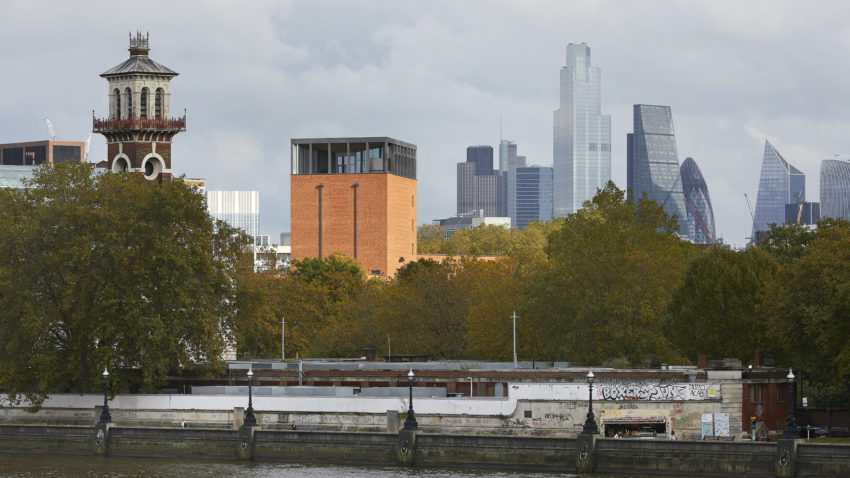One of the oldest firms in Swanage has been honoured with a national award for its contribution to a prestigious new building in London.
Swanage Brickworks was chosen to make the bricks – all two hundred thousand of them – for the new library at Lambeth Palace in London, the home of the Archbishop of Canterbury.
The impressive new building, which can clearly be seen on the city’s skyline, is just across the River Thames from the Houses of Parliament.
Swanage Bricks, of course, can also be viewed across Swanage, having been used to build lots of houses in the town over the years.

The Lambeth Palace Library, just across the River Thames from the Houses of Parliament
“Massive honour”
Mark Woolston has been factory manager for 15 years, starting out as a ‘sandboy’ at the age of 18, giving the brickmakers their sand.
He was delighted when the project won the category for the best public building and also the overall award at the Brick Development Association’s annual prize ceremony.
He said:
“It’s a massive honour to have our bricks used for such a prestigious project and for such a beautiful building, which really shows them off. To then go on and win the top award in the country is fantastic.”

The brickworks are between Swanage and Ulwell

Two hundred thousand bricks were supplied for the library from the Swanage factory
Brickyard Lane
The factory on Brickyard Lane, between Swanage and Ulwell, employs 28 staff plus many contractors. Now part of a national company called Ibstock, it has been around since at least 1865.
The brickworks use clay dug from its own Wealdon Clay beds that run through the north of Swanage. The quarry seams provide many different colours. The local landowner, The National Trust gets a royalty of one pence a brick.
The clay is rolled in sand and thrown into moulds. The firing and cooling process takes three days.

The team who set and blended the bricks. Left to Right: Andrew Westall, Colin Pride, Mark James, Steven Pride, Rikki Budden, Russell Varney
Archives of the Church of England
The Archbishop of Canterbury Justin Welby broke the ground for the new Lambeth Palace Library in 2018 and it has been open to the public since summer 2021.
The library, which cost in excess of £23 million, houses the archives of the Church of England, one of the most important collections of religious books, manuscripts and archives in Europe. It was designed by London-based architects Wright & Wright.

The Archbishop of Canterbury chats to the architects at the launch of the building project

The MacDurnan Gospels from the late 9th century are just one of the treasures in the archive
“Twice made”
Architect Sandy Wright said:
“We went down to Dorset to see them being made. One thing that’s beautiful about handmade clay is that the buildings they appear in are twice made. They’re made by somebody who throws it into a mould and then it comes onto the building site and its made again by the bricklayer.”
Clare Wright added:
“There was a lot of anxiety amongst some of the people involved in the project that the building was going to be very blank but actually because of the mix of bricks and the way it’s been designed it does have a lot of visual interest.”


The massive building is clad with Swanage handmade bricks
Bricks fit with historic palace
Brick Awards judge Catherine Burd remarked that the design was ‘excellent, courageous, and rigorous in its use of brick as a primary cladding material’.
The architects chose the bricks so that the new building would blend in with the historic palace and because of their durability.

Broadcaster and writer Giles Brandreth presents the supreme award for the project
“Understated elegance”
The judge added:
“The careful mixing and batching of three subtlety different shades of red brick, combined with the restrained use of textured panels and careful proportions of the openings, all soften the unapologetically massive volume and give the whole an understated elegance.”


The bricks create great texture inside as well as outside
“Quality, not quantity”
Swanage Bricks have been used in other high-profile projects including at Paternoster Square in London, next to St Paul’s Cathedral. Other developments include expensive private houses.
Mark Woolston said:
“Every single brick on the project was hand-blended by workers at the factory. For us, it’s quality, not quantity.”

A panorama of the Thames riverside with the library





